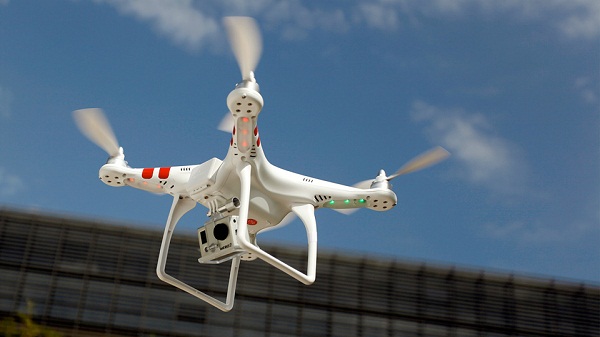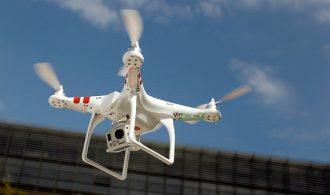In recent times, we have associated with a more or less near future when the packages arrive our air through them. But the drones, and we do not mean the military, they have an important niche market even at the consumer level.
Here we began now a shopping guide to hit when buying a drone. Start seeing the kinds of drones that exist, the main points to consider knowing which model to choose, as well as a review of existing legislation regarding the flight of drones. And soon you have recommended models in different price ranges and uses that go to give your future drone. Do not you dare?

Tips for buying a drone hit
Whether a model of fewer than 100 dollars or one of more than 1,000 dollars, buy a drone should not be a decision to be made without taking into account a number of factors and tips that will make us go to the store, online or physical, with quite clear about what we really want to buy.
When deciding on a model or another and examine in detail the specification sheet, you must differentiate the types of drones that exist in the market, as well as some considerations and tips to keep in mind. These are the most important.
Types of drones
Although usually we refer to drones as unmanned aerial vehicles, actually a drone can also be a model that does not fly and only work terrestrially. The vast majority of models on the market refer to aerial vehicles, but there are already enough land drones of interest.
Terrestrial drones usually adopt different designs and its main functions focus on speed and performing acrobatic moves type. The air differs primarily by the number of rotors. In the usual input, range is find models with four rotors while advanced are already above six or even eight, divided into as many legs.
A second classification (and most important) that can make the drones is referenced to the use that is going to give or for which they have been designed. Basically, we have drones that will have a major recreational use (leisure) and those who perform professional tasks, usually video recording or photography.
This classification is key because the rules that we must follow distinguishes very clearly. According to the State Aviation Safety Agency:
“A drone is an aircraft piloted by remote control. So it is traditionally called some of these aircraft for military use and today has extended this name to all aircraft flown by both military and civilian remote control. However, piloted aircraft remote controlled drone technically considered when a commercial or professional must use. When the use of these aircraft is exclusively sports or recreational purpose are considered RC aircraft and are governed by the rules of these”
For the purposes of our shopping guide, we call drone equally cut models more professional and recreational use, the widespread name already on the market.
Budget and main use
Along with the decision on whether the use will be professional or entertainment, the other major difference in flying drones will be if its main use will be indoors or outdoors. Those for first use tend to be smaller and lighter models that will not be easy to fly outdoors, where they are subjected to the wind and other weather.
Like other products in the market, the complexity, and advanced technologies often increase the price of the equipment. Our main advice is to start with a low -cost model to test whether we like flying drones and start learning. From there we can start thinking about increasing the budget and invest in a fuller and more likely model.
Here we must take into account the stability and ease to fly drones have a fairly close relationship with the presence of better stabilization systems and flight management in real time. And these systems usually have an extra cost in the drones. I usually also have advanced features associated with sensors such as GPS, something only found in high-end models.
Scope and autonomy
One of the major differences between professional and consumer is in the range drones, much greater in the former case. If also the link with the command but not RF WiFi, this range may be smaller if we want to make foreign flights of high altitude, is certainly a factor that we must prioritize our purchase. Even in the most affordable models we want to fly outdoors, at least 50 meters range should make sure that the experience is not limited. If only aspire to fly indoors, it is a minor feature.
A major bottleneck in today’s drones, even professionals, is the autonomy. Depending on the model, it is about 10 to 30 minutes, being usual not exceeding 20.
If you do not want to end up leaving flying drones, it is highly recommended to purchase any extra battery replacement and even invest in a quick charger for the flight can be maintained as long as possible and recharge battery replacement will not take us too long.
Another consideration to keep in mind is to study how the battery is coupled, it is possible that with some skill can use compatible batteries but more capacity, and provided that the weight is not excessive for the type of drone we want to fly.
Control Method
How a drone is handled is another of the circumstances that we have clear before proceeding to choose a model. Control of a drone can perform both classical radio control and with our smartphone.
Here each method has its advantages and disadvantages. In the case of radio control, they are often easier to manage, reliable and accurate movements. Moreover, the scope is usually larger than a smartphone, which depends on a WiFi network that creates the drone and we connect.
The advantages of controlling a drone with a smartphone are that it can be more intuitive for initial learning to power even do it with accelerometers and gyroscope terminal. In addition, the smartphone is often used to configure aspects of the team and include extra features such as determining routes to follow.
If we choose stations controlled by radio control model, we can invest in a complete command that we can adopt and upgrade to future compatible drones through specific modules.
Recording System
No fixed line separating the use of drones professionally or entertainment is usually the capacity of the first to record video or take photographs. In models of the highest range it is common that we can include our own cameras, even heavy SLR.
In the mid – range cameras usually offer enough quality despite being integrated, usually 1080p (and even there are not professional models that record with quality 4K) and good stabilization. And it is no longer uncommon to find models to start including camera and recording function as a hook, but know that they are almost anecdotal recordings by the poor quality of the results.
Yes, we can assert these integrated even low – quality cameras for flights first person view, which can be displayed in both screen and controls mainly in smartphones.
Installation and repair
When choosing a drone to start, you will probably encounter a series of acronyms that will be important when it comes to knowing if you’re going to buy will be ready to start flying from scratch, you need something more and also the possibilities for you replace determined by a breakdown, accident or improve certain section of the drone.
The most common acronyms in the world of drones are:
- RTF: Ready to Fly. These models are the usual drones in a price range input.They are teams that are ready to remove from the box and start flying without installation, configuration or calibration of any kind.
- BNF: Bind and Fly. This type of drones usually comes already assembled and ready to fly to lack of a driver, so it is a good choice if you already have one and it is quality.
- ARF: Almost Ready To Fly. A third option that often leaves some essential user choice that or want to improve or upgrade your drone that component. Eye because it is usual that the user having to mount almost all the equipment and is not suitable for beginners.
The type of drone should also be associated with the ease of getting spare parts and replace us ourselves. This is key even in the affordable model, because in the early days with them are common accidents that can end one of the damaged rotors.
If the model you have chosen facilitates the exchange of parts is good news because we can buy compatible parts and replace them if the protections or the components themselves are broken.
What says the current legislation on the use of drones?
As we advance, the AESA (State Aviation Safety Agency) considers only those drones’ unmanned aerial vehicles for professional or commercial tasks. The remaining cases our vehicle is legally an aircraft intended for leisure or recreational use.
In these cases, we must keep in mind is that the activity will conduct is regulated by the Aeronautical Federation. At the specific indications, we must add that determines each region and even each municipality.
Generally, it requires the use of aircraft flying below 120 meters high and outside urban areas or population groups, which for example includes beaches. They will then fly entitled to do so if the council has them, or we risk a sanction or complaint areas. In addition, this type of drones cannot be used for professional activities or professional.
The most appropriate in these cases is to seek if there is a model airplane club in our city or autonomous community and help us prepare for flying model airplanes safely and adjusting to the legislation. In any case, as clarified in the AESA, we are responsible in case of an accident.
In the event that mutually encouraged by a drone for commercial purposes, the final rule is still in development but to follow recommendations according to AESA. The main thing is that the operations that can be performed are limited to unpopulated areas and uncontrolled airspace.
The new legislation allows foreign record an aircraft up to 25 kg, whenever day and in good weather conditions for visibility. It also has to wear a visible identification with their name, serial number and the name and contact details of the operating company.
In addition, the drone must at all times be within sight of the pilot and no more than 500 meters away and no more than 120 meters high, of course, outside of controlled airspace.
The pilot must have a qualification as operator drones, for which a permit or authorization is not required but simply an acknowledgment of filing the statement of compliance with the documentation in the record AESA.
The conditions for obtaining such a permit pilot drones are:
- Prove that possesses the theoretical knowledge to obtain a pilot’s license, which can be obtained via training organizations approved by EASA or ATO.
- Be of age
- LAPL medical certificate class or Class 2 (for drones over 25 kg)
- Prove that they have adequate knowledge of the aircraft will fly and its pilot, through a document that can be issued by the operator, the manufacturer of the aircraft or an organization authorized by it or by an organization of approved training.

